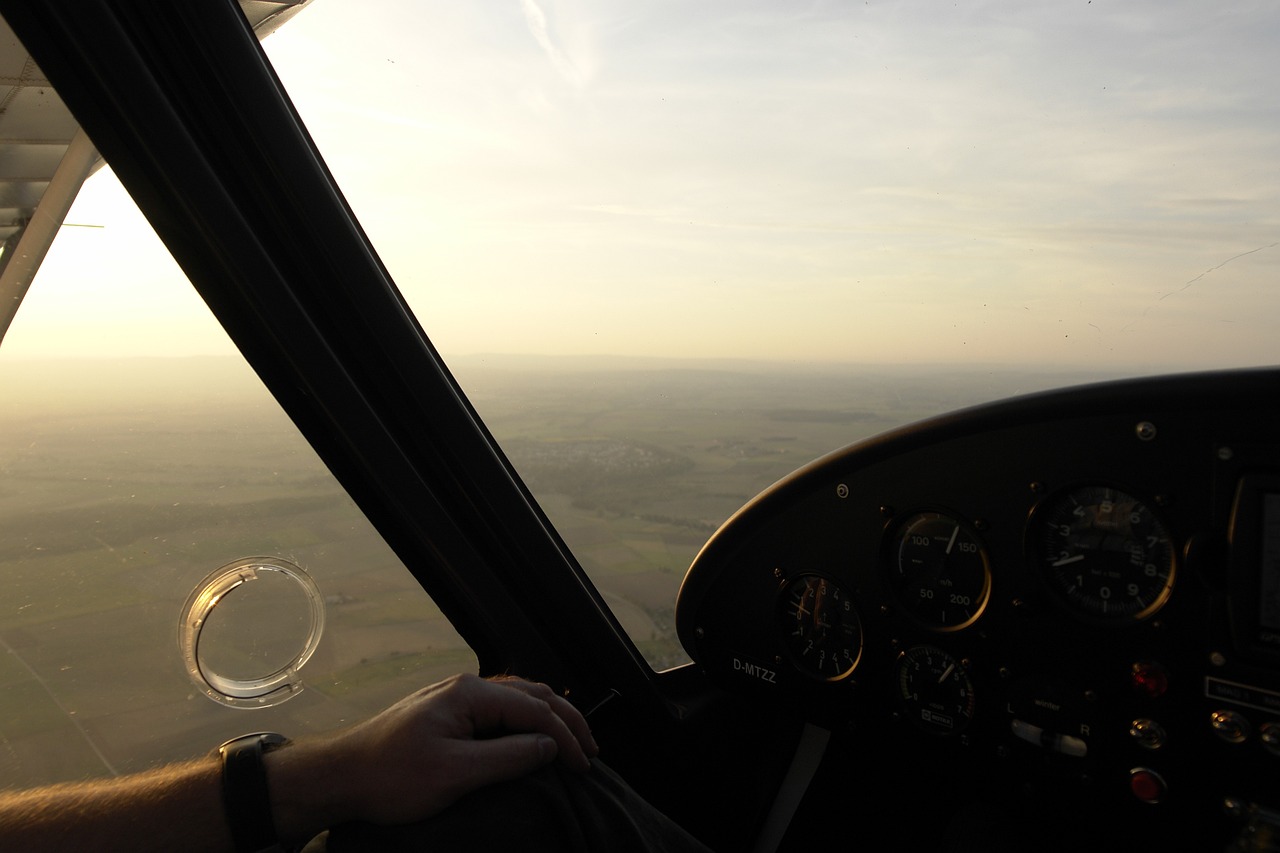This article explores essential strategies and insights for aspiring pilots seeking to justify obtaining a Private Pilot License (PPL), covering the benefits, requirements, and practical tips for success.
Understanding the Importance of a Private Pilot License
A Private Pilot License (PPL) is not just a certificate; it represents a significant milestone for anyone dreaming of flying. It allows pilots to take to the skies for personal or professional reasons, offering a unique blend of freedom and responsibility. With a PPL, individuals can enjoy the thrill of flying while also opening doors to various opportunities in the aviation industry.
Benefits of Obtaining a Private Pilot License
- Enhanced Travel Flexibility: A PPL grants pilots the ability to fly on their own schedule, avoiding the constraints of commercial airline timetables.
- Personal Enjoyment: Many pilots pursue a PPL simply for the joy of flying, allowing them to explore new destinations and engage in activities like aerial photography.
- Career Advancement: For those considering a career in aviation, a PPL serves as a foundational step toward more advanced certifications and professional flying opportunities.
Requirements for Obtaining a Private Pilot License
To embark on the journey of obtaining a PPL, aspiring pilots must meet several essential requirements:
- Age: Candidates must be at least 17 years old.
- Medical Certification: A valid medical certificate is required to ensure that pilots are physically fit to operate an aircraft.
- Flight Training: A minimum of 40 flight hours, including both dual instruction and solo flying, is necessary to gain the required skills and knowledge.
Choosing the Right Flight School
Selecting a reputable flight school is crucial for successful training. Here are some factors to consider:
- Location: Proximity to the school can affect training frequency and convenience.
- Instructor Experience: Experienced instructors can provide better insights and training.
- Training Resources: Schools with modern aircraft and facilities can enhance the learning experience.
Preparing for the Written Exam
Passing the FAA written exam is a significant step in the PPL journey. Adequate preparation is key:
- Study Resources: Utilize books, online courses, and study guides to cover all necessary topics.
- Practice Tests: Taking practice exams can help familiarize candidates with the test format and identify weak areas.
Flight Training: What to Expect
Flight training is a pivotal component of obtaining a PPL. Understanding what to expect can help aspiring pilots prepare:
- Initial Training: Typically begins with dual instruction, allowing students to learn under the guidance of a certified instructor.
- Solo Flight Experience: Once proficient, students will undertake solo flights, crucial for building confidence and demonstrating independence.
Maintaining Your Private Pilot License
After obtaining a PPL, maintaining it requires ongoing education and practice:
- Flight Review: Pilots must complete a flight review every two years to ensure proficiency.
- Continuing Education: Engaging in additional training can enhance skills and safety, making continuous learning essential.
Networking and Community Involvement
Engaging with the aviation community provides support and resources:
- Joining Organizations: Membership in groups like the Aircraft Owners and Pilots Association (AOPA) can offer valuable resources.
- Participating in Events: Attending fly-ins and airshows fosters connections among pilots and enhances knowledge.
Pursuing a Private Pilot License is a rewarding journey filled with opportunities for personal and professional growth. By understanding the requirements, preparing effectively, and engaging with the aviation community, aspiring pilots can successfully navigate their path to flight.
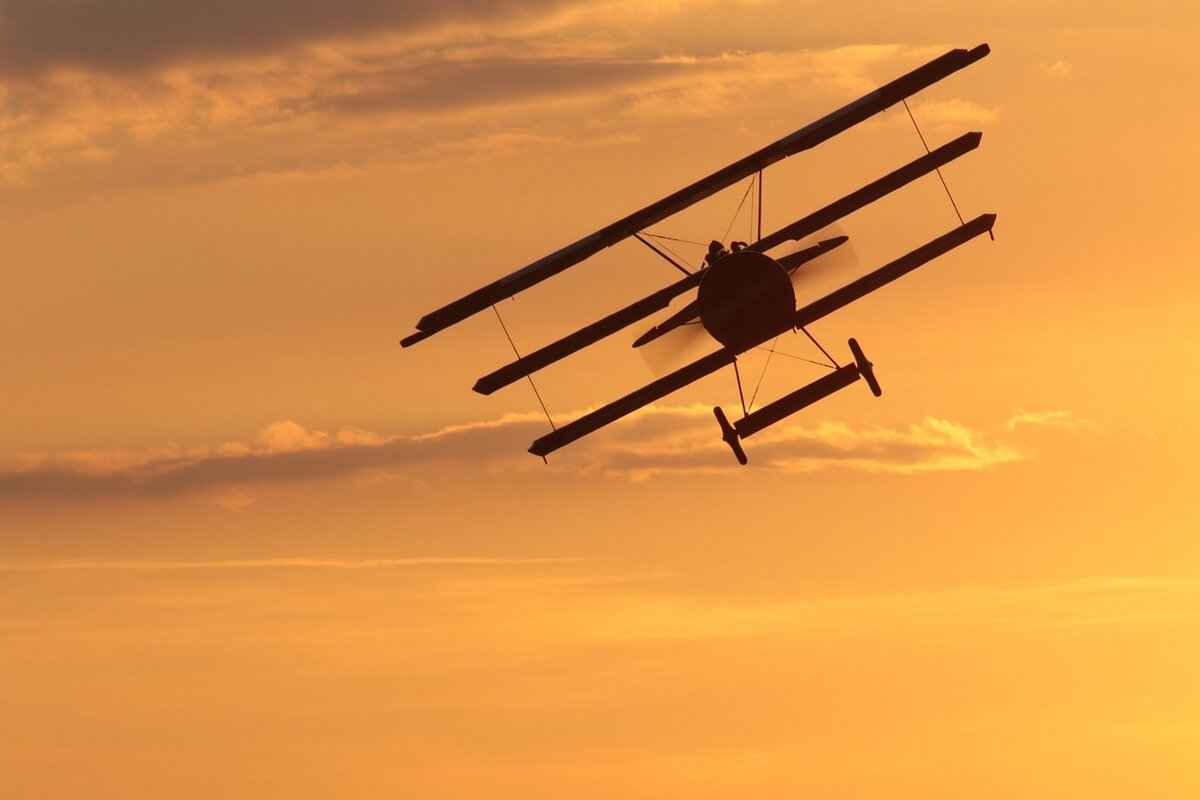
Understanding the Importance of a Private Pilot License
A Private Pilot License (PPL) is a fundamental credential for individuals who wish to take to the skies, whether for leisure or as a stepping stone toward a professional aviation career. The significance of obtaining a PPL cannot be overstated, as it provides numerous advantages that cater to both personal aspirations and career goals. This article delves into the multifaceted importance of a PPL, emphasizing its benefits and the opportunities it unlocks for aspiring pilots.
Why is a Private Pilot License Essential?
For many aviation enthusiasts, a PPL represents the first major milestone on their journey to becoming proficient pilots. It serves as a gateway to flight, allowing individuals to operate aircraft for personal use. This license is not merely a piece of paper; it embodies the skills, knowledge, and responsibility required to ensure safe flying practices.
- Personal Freedom: One of the most appealing aspects of holding a PPL is the personal freedom it affords. Pilots can choose when and where they want to fly, bypassing the constraints of commercial airline schedules. This flexibility allows for spontaneous trips and the ability to visit remote areas that are often inaccessible by commercial flights.
- Adventure and Exploration: The thrill of flying opens up a world of adventure. With a PPL, individuals can explore new destinations, participate in aerial photography, or join fly-ins, which foster a sense of community among fellow aviation enthusiasts.
- Cost-Effective Travel: For groups or families, flying privately can be more economical than purchasing multiple commercial airline tickets. Understanding the cost-effectiveness of renting or owning an aircraft can be a compelling reason to pursue a PPL.
Career Advancements:
A PPL is also a critical stepping stone for those looking to advance in the aviation industry. It opens doors to further training and certifications, leading to more professional opportunities. Many pilots begin their careers with a PPL before progressing to more advanced licenses, such as an Instrument Rating or Commercial Pilot License. This progression not only enhances their skills but also increases their employability in a competitive job market.
Requirements and Responsibilities:
Obtaining a PPL involves meeting specific requirements, such as age, medical certification, and flight training hours. These prerequisites ensure that candidates are physically and mentally prepared for the responsibilities of piloting an aircraft. The rigorous training process instills a strong sense of discipline and accountability, which are essential traits for any pilot.
Conclusion:
In summary, a Private Pilot License is not just a credential; it is a vital tool that empowers individuals to pursue their passion for flying. It offers unparalleled personal freedom, opportunities for adventure, and a pathway to professional growth in the aviation industry. Aspiring pilots should recognize the importance of obtaining a PPL as a foundational step toward realizing their dreams in the skies.

Benefits of Obtaining a Private Pilot License
Acquiring a Private Pilot License (PPL) is a significant milestone for many aviation enthusiasts. The benefits of obtaining a PPL extend beyond just the ability to fly; they encompass a range of personal and professional advantages that can enrich one’s life in various ways.
One of the most appealing aspects of holding a PPL is the freedom to travel on your own schedule. Unlike commercial airlines, which operate on fixed timetables, private pilots can plan flights based on their convenience. This flexibility allows for spontaneous getaways to remote locations that may not be serviced by commercial flights. Imagine flying to a secluded cabin for a weekend retreat or visiting family in distant cities without the hassle of crowded terminals and long security lines.
For many, flying is more than just a means of transportation; it is a passion. A PPL provides the opportunity to indulge in personal enjoyment through flying. Whether it’s taking scenic flights over breathtaking landscapes, participating in aviation events, or engaging in aerial photography, the possibilities are endless. This license allows pilots to embrace adventure, offering a unique perspective of the world from above.
Obtaining a PPL opens doors to a vibrant community of fellow aviation enthusiasts. Pilots often engage in networking opportunities through local flying clubs, aviation events, and online forums. These connections can lead to lifelong friendships, mentorship, and shared experiences that enrich the flying journey. Participating in community events, such as fly-ins and airshows, fosters camaraderie and provides valuable insights into the aviation industry.
While many pilots pursue a PPL for personal reasons, it can also serve as a stepping stone for those looking to advance their careers in aviation. A PPL is often the first step toward obtaining more advanced licenses and ratings, such as an Instrument Rating or Commercial Pilot License. This progression not only enhances flying skills but also opens up various career paths within the aviation sector, including flight instruction, charter services, and more.
Flying privately can often be more economical than commercial air travel, especially for groups. When considering the costs associated with commercial flights, including baggage fees and ticket prices, owning or renting a small aircraft can become a cost-effective alternative. This financial benefit, combined with the ability to travel on your terms, makes pursuing a PPL an attractive option for many.
The journey to obtaining a PPL is not just about flying; it is also a path of personal development. Pilots learn valuable skills such as decision-making, problem-solving, and time management. The rigorous training process enhances self-discipline and confidence, traits that are beneficial both in the cockpit and in everyday life. Moreover, the knowledge gained during training—covering topics from navigation to meteorology—equips pilots with a well-rounded understanding of aviation.
In summary, the benefits of obtaining a Private Pilot License are vast and multifaceted. From enhanced travel flexibility to personal enjoyment, networking opportunities, and career advancement, a PPL enriches the lives of those who pursue it. Whether for leisure or professional aspirations, the journey of becoming a pilot offers invaluable experiences and skills that last a lifetime.
Personal Freedom and Flexibility
One of the most compelling reasons to obtain a Private Pilot License (PPL) is the unparalleled freedom it offers to pilots. Unlike commercial airline travel, which is often constrained by rigid schedules and limited routes, having a PPL allows individuals to fly when and where they choose. This flexibility can transform the way you approach travel and adventure.
With a PPL, pilots can embark on spontaneous journeys, taking off on a whim to explore new destinations. Imagine waking up on a Saturday morning and deciding to fly to a picturesque coastal town for lunch or heading to a remote mountain cabin for a weekend getaway. The ability to make such decisions at a moment’s notice can lead to unforgettable experiences and adventures that commercial flights simply cannot provide.
Moreover, a PPL opens up access to remote locations that are often unreachable by commercial airlines. Many beautiful and secluded spots have small airstrips, allowing pilots to land right at their destination. Whether it’s a hidden lake, a charming village, or a national park, the PPL enables exploration of these unique places that are off the beaten path. This can lead to a deeper connection with nature and a greater appreciation for the world around us.
Additionally, flying privately can be a more cost-effective option, especially for families or groups. When traveling with multiple passengers, the cost of renting an aircraft can often be less than purchasing several commercial tickets. This financial benefit, combined with the convenience of flying on your own schedule, makes the PPL an attractive option for those who value both freedom and flexibility.
Furthermore, the experience of piloting an aircraft can be immensely rewarding and fulfilling. It fosters a sense of accomplishment and personal growth, as pilots gain confidence and skills through their training and flying experiences. The journey of becoming a pilot is not just about obtaining a license; it’s about the adventures that follow and the newfound freedom to explore the skies.
In conclusion, the personal freedom and flexibility that come with a Private Pilot License are invaluable. From spontaneous trips to accessing remote destinations, the PPL allows pilots to redefine travel on their terms. This flexibility not only enhances the flying experience but also enriches life with new adventures and memories.
Adventure and Exploration
Flying is often seen as a gateway to adventure, offering a unique perspective on the world below. For many, the thrill of piloting an aircraft is not just about reaching a destination; it’s about the journey itself. A Private Pilot License (PPL) opens up a realm of possibilities for those eager to explore new horizons.
- Discover New Destinations: With a PPL, pilots have the freedom to visit remote and picturesque locations that are often inaccessible by traditional means. Whether it’s a scenic coastline, a mountain retreat, or a hidden lake, the sky is the limit.
- Aerial Photography: For photography enthusiasts, flying provides an unparalleled opportunity to capture breathtaking landscapes from above. The ability to take stunning aerial shots can transform a hobby into a passion, allowing pilots to document their adventures.
- Fly-Ins and Community Events: Participating in fly-ins, where pilots gather at specific airports for social and aviation-related activities, fosters a sense of community. These events not only allow pilots to meet like-minded individuals but also provide a platform to share experiences and learn from one another.
The camaraderie among pilots is a significant aspect of the flying experience. Engaging with fellow aviation enthusiasts can lead to lasting friendships and valuable networking opportunities. Local flying clubs and organizations often organize events that encourage pilots to come together, share knowledge, and enjoy their mutual love for aviation.
Moreover, flying can be a family affair. Many pilots introduce their loved ones to the joy of flight, creating cherished memories together. Family trips in a small aircraft can be a bonding experience, allowing everyone to witness the beauty of nature from a bird’s-eye view.
Flying also encourages personal growth. The challenges faced during flight training and actual flying experiences build confidence and resilience. Overcoming fears and mastering new skills can lead to a profound sense of accomplishment, making the journey of becoming a pilot as rewarding as the destination itself.
In summary, obtaining a PPL is not just about gaining the ability to fly; it’s about embracing a lifestyle filled with adventure and exploration. The opportunities to discover new places, connect with fellow aviation enthusiasts, and grow personally make flying an enriching experience that goes beyond the cockpit. Every flight is an invitation to explore the world from a different vantage point, offering endless adventures for those who dare to take to the skies.
Cost-Effective Travel
When considering travel options, many people often overlook the potential cost-effectiveness of flying privately compared to commercial airlines. This is particularly true for groups or families traveling together. Understanding the financial implications of private flying can significantly influence the decision to pursue a Private Pilot License (PPL).
One of the primary advantages of flying privately is the ability to save money on overall travel costs. While the upfront expenses of owning or renting a private aircraft may seem daunting, it is essential to analyze the long-term savings, especially for frequent travelers. For instance, when a group of four or more individuals books commercial flights, the costs can quickly escalate due to ticket prices, baggage fees, and other hidden charges. In contrast, flying privately allows the entire group to travel together, often at a fraction of the cost per person.
- Group Travel Savings: When flying with a group, the cumulative cost of commercial tickets can be significantly higher than the cost of chartering a private plane. This is especially true for short-haul flights where the convenience of direct travel can save both time and money.
- Time Efficiency: Private flying eliminates the need for long security lines and boarding processes typical of commercial flights. This time saved can translate into monetary savings, as travelers can maximize their time at their destination.
- Flexible Scheduling: Private pilots can choose their flight times, avoiding the need for layovers or connecting flights that often accompany commercial travel. This flexibility can lead to reduced accommodation costs and improved overall travel experience.
Moreover, the cost-effectiveness of private flying extends to operational expenses. For those considering ownership, the costs associated with maintenance, fuel, and hangar fees can be offset by the time and money saved on commercial flights. Additionally, renting a plane for a group outing can be a more economical option than purchasing individual tickets for each member of the party.
Furthermore, the potential for tax benefits should not be overlooked. In some cases, owning a private aircraft can provide tax deductions related to business travel, making it an attractive option for entrepreneurs and business professionals. This financial incentive can further justify the pursuit of a PPL, as it opens up opportunities for personal and business-related flying.
In conclusion, the cost-effectiveness of flying privately is a compelling reason for aspiring pilots to consider obtaining a PPL. By analyzing the financial benefits of private travel, individuals can make informed decisions that align with their travel needs and financial goals. Whether for leisure or business, the advantages of private flying are clear, making it an attractive option for many.
Career Opportunities in Aviation
The aviation industry is vast and offers numerous career opportunities for individuals passionate about flying and aviation-related fields. Obtaining a Private Pilot License (PPL) is often the first step for many aspiring aviators, serving as a critical foundation for further advancement in their careers. This section explores the diverse career paths available in aviation and how a PPL can be a significant stepping stone toward achieving professional goals.
1. Becoming a Professional Pilot
One of the most direct career paths following the acquisition of a PPL is becoming a professional pilot. This can include various roles such as:
- Commercial Pilot: After obtaining additional ratings and certifications, pilots can work for airlines, charter companies, or cargo carriers.
- Flight Instructor: Many pilots choose to teach others to fly, sharing their knowledge and experience while building flight hours.
- Corporate Pilot: Flying for businesses or individuals, corporate pilots often enjoy a flexible schedule and the opportunity to travel to diverse destinations.
A PPL is essential for these roles as it lays the groundwork for further training, including obtaining an Instrument Rating and a Commercial Pilot License.
2. Opportunities in Aviation Management
For those interested in the operational side of aviation, a PPL can also be advantageous for careers in aviation management. Understanding the intricacies of flight operations can provide valuable insights into roles such as:
- Airport Manager: Overseeing the operations of an airport, ensuring safety, efficiency, and compliance with regulations.
- Flight Operations Manager: Managing the logistics of airline or charter operations, including scheduling and resource allocation.
- Aviation Safety Inspector: Ensuring compliance with safety regulations and conducting inspections of aircraft and flight operations.
Having a PPL can enhance credibility and understanding in these roles, making candidates more competitive in the job market.
3. Exploring Specialized Aviation Careers
The aviation industry is not limited to flying and management; numerous specialized careers exist that can benefit from a PPL. Some of these include:
- Aerial Survey Pilot: Conducting surveys for mapping, agriculture, or environmental studies.
- Air Ambulance Pilot: Providing critical medical transportation services, often in emergency situations.
- Wildlife and Conservation Pilot: Supporting conservation efforts through aerial monitoring and transport.
These specialized roles often require pilots to have a diverse skill set and a thorough understanding of aviation principles, making a PPL an essential credential.
4. Networking and Community Involvement
In addition to formal career paths, obtaining a PPL opens up opportunities for networking within the aviation community. Engaging with other pilots and aviation professionals can lead to:
- Mentorship Opportunities: Learning from experienced pilots can provide invaluable insights and guidance for career advancement.
- Job Referrals: Many job opportunities in aviation are filled through personal connections and recommendations.
- Access to Aviation Events: Participating in fly-ins, airshows, and aviation seminars can enhance knowledge and foster professional relationships.
Being active in the aviation community can significantly impact career growth and opportunities.
5. Continuous Learning and Advancement
The aviation industry is constantly evolving, and pilots with a PPL are encouraged to pursue continuous learning. This can include:
- Advanced Ratings: Obtaining additional certifications such as an Instrument Rating, Multi-Engine Rating, or Airline Transport Pilot License (ATPL).
- Specialized Training: Engaging in training programs for specific aircraft types or operations, enhancing skills and marketability.
- Professional Development: Participating in workshops and seminars to stay updated on industry trends and regulations.
Continual education not only improves flying skills but also prepares pilots for more advanced roles in aviation.
In summary, a Private Pilot License is a crucial asset for those looking to explore diverse career opportunities in the aviation industry. Whether aspiring to be a professional pilot, pursuing aviation management, or engaging in specialized fields, a PPL serves as a foundational step that opens numerous doors for personal and professional growth.
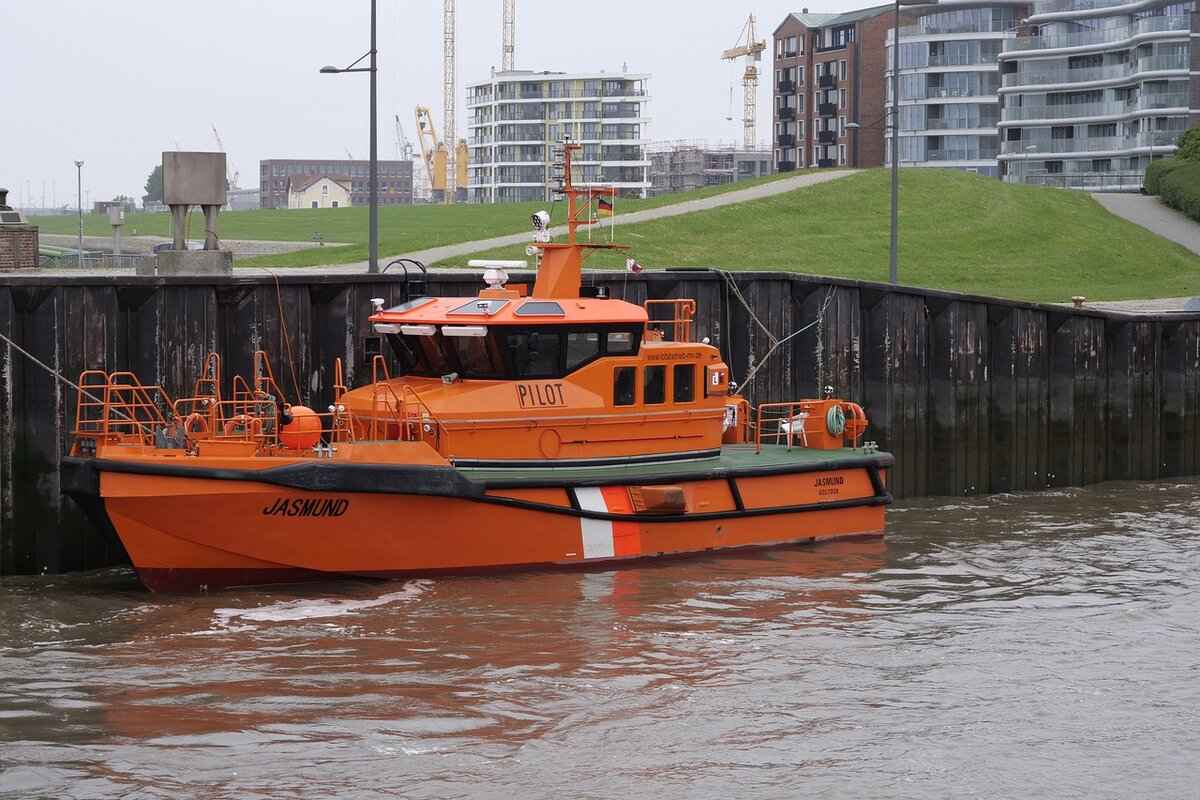
Requirements for Obtaining a Private Pilot License
Obtaining a Private Pilot License (PPL) is a significant milestone for aspiring aviators. This article delves into the essential requirements that candidates must fulfill to secure their PPL, ensuring they are well-prepared for the responsibilities of flying.
One of the primary requirements for obtaining a PPL is the age limit. Candidates must be at least 17 years old to apply. This age requirement is in place to ensure that pilots possess the necessary maturity and decision-making abilities needed for safe flying.
In addition to age, aspiring pilots must obtain a valid medical certificate. This certification confirms that the individual is physically and mentally fit to operate an aircraft. There are three classes of medical certificates, with Class 1 and Class 2 being the most common for private pilots. The examination typically includes vision tests, hearing assessments, and evaluations of medical history. Candidates with certain medical conditions may face additional scrutiny, but many can still qualify with proper documentation and treatment.
Another critical requirement for obtaining a PPL is the completion of a minimum of 40 flight hours. This training must include both dual instruction with a certified flight instructor and solo flight time. The FAA mandates that aspiring pilots complete at least 20 hours of flight training with an instructor, which covers essential skills such as navigation, communication, and emergency procedures.
In addition to the dual instruction, candidates must log at least 10 hours of solo flight time. This solo experience is crucial, as it allows pilots to demonstrate their ability to operate an aircraft independently. During solo flights, pilots practice various maneuvers, navigation, and decision-making skills, which are vital for safe flying.
Alongside practical flight training, aspiring pilots must also complete ground school training. This educational component covers essential aviation topics, including aircraft systems, navigation, meteorology, and regulations. Ground school can be conducted in a classroom setting or through online courses, providing flexibility for students. This theoretical knowledge is crucial for understanding the principles of flight and preparing for the FAA written exam.
Passing the FAA written exam is a mandatory step in obtaining a PPL. This exam tests candidates on their understanding of aviation regulations, flight operations, and safety procedures. To prepare effectively, aspiring pilots should utilize a variety of study resources, including textbooks, online courses, and practice exams. Engaging with multiple formats can enhance comprehension and retention of the material.
Additionally, many flight schools offer preparatory courses specifically designed to help students succeed on the written exam. These courses often include practice tests and personalized instruction, ensuring that candidates feel confident and well-prepared on exam day.
After completing the required flight hours and passing the written exam, candidates must demonstrate their flying skills during a checkride with an FAA examiner. This practical test evaluates the pilot’s ability to perform various maneuvers, handle emergencies, and adhere to safety protocols. The checkride typically includes both an oral examination and a flight test, ensuring that candidates can apply their knowledge in real-world scenarios.
Preparation for the checkride is crucial, as it is the final step in obtaining a PPL. Many instructors provide mock checkrides to help students practice and build confidence. Successful completion of the checkride signifies that the candidate has met all the necessary requirements and is ready to be a licensed private pilot.
In summary, obtaining a Private Pilot License involves meeting specific age and medical requirements, completing flight training and ground school, passing the written exam, and successfully demonstrating flying proficiency during a checkride. By fulfilling these requirements, aspiring pilots can embark on a rewarding journey in aviation.
Age and Medical Certification
For individuals aspiring to become pilots, understanding the prerequisites for obtaining a Private Pilot License (PPL) is essential. One of the fundamental requirements is that candidates must be at least 17 years old. This age limit is set to ensure that pilots possess the maturity and decision-making abilities necessary for safe flying. Additionally, candidates must hold a valid medical certificate, which serves as a confirmation of their physical and mental fitness to operate an aircraft.
The medical certification process involves an examination by an FAA-authorized aviation medical examiner. This examination assesses various health aspects, including vision, hearing, and overall physical condition. The purpose of this requirement is to ensure that pilots do not have any medical conditions that could impair their ability to fly safely. Common disqualifying factors may include severe vision impairments, neurological disorders, or substance abuse issues.
Obtaining a medical certificate can be a straightforward process for many aspiring pilots. However, it is crucial to be aware of any pre-existing medical conditions that may require additional documentation or evaluations. For instance, individuals with a history of certain medical conditions may need to provide comprehensive medical records or undergo further testing to demonstrate their fitness for flying.
- Types of Medical Certificates:
- First Class: Required for airline transport pilots, this certificate has the strictest health standards.
- Second Class: Necessary for commercial pilots, it has slightly less stringent requirements than the first class.
- Third Class: This is the minimum requirement for private pilots and has the most lenient health standards.
Once an aspiring pilot has successfully obtained their medical certificate, they can move forward with their flight training. It is important to keep in mind that maintaining the validity of this certificate is crucial throughout a pilot’s career. Regular health check-ups and adherence to medical guidelines are essential to ensure ongoing fitness for flying.
In conclusion, meeting the age requirement and securing a valid medical certificate are vital first steps for anyone looking to embark on a journey towards becoming a private pilot. These requirements not only help to ensure the safety of the pilot but also contribute to the overall safety of the aviation community.
Flight Training and Experience
Flight training is a fundamental aspect of obtaining a Private Pilot License (PPL). This training not only equips aspiring pilots with the necessary skills and knowledge but also ensures they are prepared for the responsibilities that come with flying. In this section, we will delve into the essential components of flight training and experience, focusing on the importance of flight hours, dual instruction, and solo flying.
To achieve a PPL, candidates must complete a minimum of 40 flight hours. This requirement includes both dual instruction and solo flying, which are critical for developing a well-rounded pilot. The dual instruction phase involves flying with a certified flight instructor who provides guidance, feedback, and support, ensuring that students learn essential flying techniques in a safe environment.
During the dual instruction phase, students learn various maneuvers, emergency procedures, and navigation techniques. This hands-on training allows for real-time corrections and enhances the learning experience. Instructors often emphasize the importance of mastering fundamental skills, such as takeoff, landing, and basic flight maneuvers, which are vital for safe flying.
After accumulating a certain number of dual flight hours and demonstrating proficiency, students are permitted to undertake solo flights. This experience is crucial for building confidence and independence as a pilot. Solo flights allow students to practice their skills without an instructor, fostering decision-making abilities and reinforcing their training. It is during these flights that pilots truly learn to handle the aircraft and navigate independently.
Accumulating flight hours is essential for gaining experience and confidence. Each flight hour logged contributes to the pilot’s overall skill set and prepares them for real-world flying challenges. Aspiring pilots should not only focus on meeting the minimum requirement but strive to exceed it by seeking additional flying opportunities, such as cross-country flights and different weather conditions.
Aspiring pilots can maximize their flight training by engaging in various flying experiences. This includes flying in different weather conditions, which helps develop adaptability and enhances decision-making skills. Furthermore, participating in cross-country flights broadens navigation skills and exposes pilots to diverse flying environments, ultimately preparing them for a wide range of scenarios.
Keeping an accurate logbook is crucial for tracking flight hours. Pilots should ensure that they log all flight time, including both dual and solo hours, as this documentation is necessary for meeting FAA requirements. Utilizing digital tracking tools can simplify this process and help maintain compliance with regulations.
Flight training doesn’t end with obtaining a PPL. Pilots are encouraged to engage in continuous learning through additional training, such as instrument ratings or advanced maneuvers. This ongoing education not only enhances skills but also contributes to overall safety in aviation. Aspiring pilots should view their training as a lifelong journey, always seeking to improve and expand their knowledge.
In conclusion, flight training and experience are integral components of obtaining a Private Pilot License. By understanding the requirements, engaging in dual instruction, and maximizing solo flying opportunities, aspiring pilots can develop the skills necessary for safe and effective flying. The journey to becoming a proficient pilot is filled with challenges and rewards, making it a fulfilling pursuit for those passionate about aviation.

Choosing the Right Flight School
Selecting a reputable flight school is critical for successful training. Factors such as location, instructor experience, and training resources can significantly impact the learning experience. As an aspiring pilot, making an informed choice is essential for your journey toward obtaining a Private Pilot License (PPL).
- Location Matters: The geographical location of the flight school can greatly influence your training experience. Schools situated near busy airports may provide more opportunities for varied flying conditions and traffic patterns, while those in quieter areas might offer a more relaxed environment for beginners.
- Instructor Experience: The qualifications and experience of flight instructors are paramount. Look for schools that employ instructors with a wealth of flying hours and diverse backgrounds. Instructors with real-world experience can provide invaluable insights and practical tips that enhance your learning.
- Fleet and Equipment: A well-maintained fleet of aircraft is crucial for safe training. Ensure the school has a variety of aircraft available for training, including modern technology such as glass cockpits, which can better prepare you for the future of aviation.
- Curriculum and Training Programs: Evaluate the curriculum to ensure it covers both ground school and flight training comprehensively. A structured program that includes simulator training can enhance your skills and confidence before you take to the skies.
- Student Reviews and Testimonials: Researching reviews from former students can provide insights into the quality of training and support offered. Look for feedback on instructor quality, fleet condition, and overall satisfaction with the training experience.
Financial Considerations:Before committing, consider the financial aspects of your training. Flight schools can vary significantly in cost. Inquire about tuition fees, payment plans, and additional expenses such as books and equipment. Some schools may offer financing options or scholarships that could ease the financial burden.
Trial Lessons:Many flight schools offer introductory flights or trial lessons. Taking advantage of these opportunities can help you gauge the school’s environment, instructor style, and overall fit for your training needs. This firsthand experience can be invaluable in making your decision.
Accreditation and Affiliations:Check if the flight school is accredited by recognized aviation organizations. Accreditation can be a sign of quality and adherence to industry standards. Additionally, schools affiliated with larger organizations or universities may provide enhanced resources and networking opportunities.
In summary, choosing the right flight school involves careful consideration of various factors, including location, instructor experience, fleet quality, curriculum, and financial aspects. By conducting thorough research and possibly taking trial lessons, you can ensure that you select a flight school that aligns with your goals and provides a solid foundation for your aviation career.
Researching Flight Schools
Choosing the right flight school is a pivotal step in your journey to obtaining a Private Pilot License (PPL). With numerous options available, thorough research is essential to ensure you receive quality training and support. Here are some important factors to consider when evaluating local flight schools.
- Read Reviews and Testimonials: Start by exploring online reviews and testimonials from former students. Websites like Yelp or Google Maps can provide insights into the experiences of others. Look for patterns in feedback, such as comments on instructor effectiveness, aircraft condition, and overall satisfaction.
- Check Accreditation and Certifications: Ensure the flight school is accredited by relevant aviation authorities. This guarantees that the school meets specific standards for training and safety. Additionally, verify that the instructors hold the necessary certifications to provide quality instruction.
- Visit the Facilities: If possible, visit the flight schools you are considering. A personal visit allows you to assess the condition of the aircraft, the maintenance facilities, and the overall environment. A well-maintained fleet and a professional atmosphere can indicate a school’s commitment to quality training.
- Evaluate the Curriculum: Investigate the curriculum offered by each school. A comprehensive program should include ground school, flight training, and access to simulators. Understanding the school’s approach to teaching can help you determine if it aligns with your learning style.
- Instructor Experience: The quality of instruction can greatly affect your training experience. Inquire about the instructors’ backgrounds, including their flight hours, teaching experience, and areas of expertise. Experienced instructors can provide valuable insights and mentorship throughout your training.
- Training Resources: Assess the resources available to students, such as study materials, flight planning tools, and access to aircraft. A school that invests in quality resources can enhance your learning and prepare you better for your flying career.
- Cost and Financing Options: Consider the total cost of training, including hidden fees for materials, exams, or additional flight hours. Some schools offer financing options or payment plans, which can make training more accessible. Be sure to compare costs among different schools to find the best value.
In conclusion, conducting thorough research on local flight schools is crucial for aspiring pilots. By examining reviews, visiting facilities, and evaluating programs, you can make an informed decision that aligns with your goals. Selecting the right school will not only enhance your training experience but also set the foundation for a successful aviation career.
Evaluating Training Programs
When it comes to pursuing a Private Pilot License (PPL), one of the most critical steps is evaluating the training programs offered by various flight schools. A well-structured training program is essential for ensuring that aspiring pilots receive a comprehensive education that encompasses both ground school and flight training. Below are several factors to consider when assessing flight school training programs.
- Curriculum Content: A robust curriculum should cover essential topics such as aerodynamics, navigation, meteorology, and regulations. Ensure that the program includes both theoretical knowledge and practical applications.
- Ground School: Ground school is a vital component of pilot training. It equips students with the necessary theoretical knowledge that supports their practical flying skills. Look for programs that offer interactive learning experiences, such as simulations and group discussions.
- Flight Training: The flight training portion should include a mix of dual instruction and solo flying. This hands-on experience is crucial for developing piloting skills. Ask about the aircraft used for training and the instructor-to-student ratio to ensure personalized attention.
- Instructor Qualifications: The experience and qualifications of flight instructors can significantly impact the quality of training. Inquire about the instructors’ backgrounds, including their flight hours, certifications, and teaching experience.
- Flexibility and Scheduling: A good training program should offer flexible scheduling options to accommodate students’ varying commitments. Check if the school provides evening or weekend lessons to facilitate learning.
- Safety Record: Safety is paramount in aviation training. Research the flight school’s safety record and any incidents that may have occurred. A reputable school should prioritize safety and adhere to industry best practices.
- Student Support Services: Consider the support services available to students, such as mentoring, tutoring, and access to resources like flight simulators and study materials. A supportive learning environment can enhance the overall educational experience.
Additionally, it is beneficial to read reviews and testimonials from former students. Their experiences can provide valuable insights into the effectiveness of the training program and the overall atmosphere of the flight school.
Ultimately, choosing the right training program is a significant investment in your aviation career. By carefully evaluating the curriculum, instructors, and overall quality of the program, aspiring pilots can ensure they receive the best possible education and training to succeed in their flying endeavors.
In summary, a comprehensive training program that covers both ground school and flight training is essential for aspiring pilots. By considering the factors outlined above, you can make an informed decision that aligns with your goals and aspirations in aviation.

Preparing for the Written Exam
Passing the FAA written exam is an essential milestone in the journey to obtaining a Private Pilot License (PPL). This exam assesses your understanding of aviation principles, regulations, and safety procedures, making thorough preparation crucial. In this section, we will explore effective strategies and resources to help you succeed.
The FAA written exam consists of 60 multiple-choice questions, covering various topics such as flight regulations, navigation, meteorology, and aircraft operations. To pass, you need to achieve a score of at least 70%. Familiarizing yourself with the exam format is vital, as it helps you manage your time effectively during the test.
To prepare adequately, you should use a variety of study materials. Here are some effective resources:
- Textbooks and Guides: Invest in reputable aviation textbooks that cover the FAA syllabus. These books provide in-depth knowledge and context for the exam topics.
- Online Courses: Many flight schools and aviation organizations offer online courses specifically designed for the FAA written exam. These interactive courses often include quizzes and practice questions.
- Flashcards: Create or purchase flashcards to help memorize key terms, regulations, and concepts. This method is particularly useful for quick reviews.
Taking practice exams is one of the most effective ways to prepare. Here’s how you can maximize this strategy:
- Simulate Exam Conditions: Take practice tests under timed conditions to simulate the actual exam environment. This helps build your confidence and time management skills.
- Review Incorrect Answers: After completing practice exams, carefully review any questions you got wrong. Understanding your mistakes is crucial for improvement.
- Track Your Progress: Keep a record of your practice test scores. This will help you identify areas where you need to focus your studies.
Effective preparation requires a structured study schedule. Consider the following tips:
- Set Realistic Goals: Break your study material into manageable sections and set achievable goals for each study session.
- Allocate Time Wisely: Dedicate specific times each week for studying. Consistent study habits are more effective than cramming.
- Incorporate Review Sessions: Regularly review previously covered material to reinforce your understanding and retention of the information.
Engaging with fellow aspiring pilots can enhance your preparation. Here’s how:
- Form Study Groups: Collaborating with peers allows for discussion and clarification of complex topics. Teaching others can also reinforce your own understanding.
- Participate in Online Forums: Online aviation forums and social media groups can provide valuable insights, resources, and support from experienced pilots and instructors.
Preparing for the FAA written exam can be challenging, but maintaining motivation is key. Here are some strategies:
- Set Milestones: Celebrate small achievements along the way to keep your spirits high.
- Visualize Success: Picture yourself passing the exam and achieving your PPL. This positive reinforcement can boost your determination.
In conclusion, preparing for the FAA written exam requires a combination of effective study techniques, practice, and motivation. By utilizing various resources, engaging with peers, and maintaining a structured approach, you can enhance your understanding of aviation knowledge and increase your chances of success on the exam.
Study Resources and Materials
When preparing for the FAA written exam as part of obtaining a Private Pilot License (PPL), the choice of study resources and materials is paramount. A well-rounded approach that includes various types of learning tools can significantly enhance understanding and retention of essential aviation concepts.
- Books: Traditional textbooks remain a staple for many aspiring pilots. These books often cover foundational topics such as aerodynamics, navigation, and meteorology in detail. Look for books that are specifically tailored for PPL candidates, as they will align closely with the exam syllabus.
- Online Courses: The digital age has revolutionized learning, making online courses an excellent option for many students. Platforms like Pilot Training offer interactive courses that can be accessed at any time, allowing candidates to learn at their own pace. These courses often include video lectures, quizzes, and discussion forums.
- Study Guides: Concise study guides can help distill complex information into manageable sections. These guides often highlight key concepts and provide practice questions, which can be particularly useful for exam preparation.
- Flashcards: Utilizing flashcards for memorization can be an effective study technique. They can help reinforce important terms and concepts, making it easier to recall information during the exam.
- Apps and Software: There are numerous mobile apps designed specifically for pilot training. These apps often include practice tests, aviation calculators, and interactive learning modules that can enhance your study experience.
Engaging with a variety of resources not only caters to different learning styles but also ensures a comprehensive understanding of the material. For instance, while books provide in-depth knowledge, online courses can offer interactive elements that keep the learning process engaging.
Furthermore, participating in online forums or study groups can be beneficial. Discussing challenging topics with peers allows for collaborative learning and can help clarify complex subjects. Websites like Pilot Forums provide platforms for aspiring pilots to connect, share resources, and ask questions.
In addition to these resources, it is essential to schedule regular study sessions and set specific goals to track your progress. Consistency is key in retaining information and building confidence as you prepare for the FAA written exam. By utilizing a combination of books, online courses, study guides, and community resources, candidates can effectively equip themselves with the knowledge needed to succeed.
Ultimately, a diverse approach to studying not only prepares candidates for the exam but also fosters a deeper appreciation for the complexities of aviation. This comprehensive understanding is invaluable as they embark on their journey to becoming skilled pilots.
Practice Exams and Mock Tests
Taking practice exams and mock tests is an essential strategy for aspiring pilots preparing for their Private Pilot License (PPL) written exam. These practice sessions not only help candidates get accustomed to the format of the actual test but also play a pivotal role in identifying areas that require further study and improvement. By engaging with these resources, students can significantly enhance their understanding of aviation concepts and boost their confidence levels.
- Familiarization with Test Format: One of the primary benefits of taking practice exams is the opportunity to familiarize oneself with the structure and style of the questions. The FAA written exam consists of multiple-choice questions that can vary in complexity. By practicing with similar questions, candidates can reduce anxiety and become more comfortable with the testing process.
- Identifying Weaknesses: Mock tests provide a valuable diagnostic tool for aspiring pilots. After completing a practice exam, students can review their answers to pinpoint specific areas where they may be lacking knowledge or understanding. This targeted approach enables them to focus their study efforts more effectively, ensuring that they are well-prepared for the actual exam.
- Building Confidence: Regularly taking practice exams can significantly bolster a candidate’s confidence. As they see improvement in their scores and become more familiar with the material, they are likely to approach the actual exam with a greater sense of self-assurance. Confidence can be a critical factor in performance, and practice exams serve as a means to cultivate this essential trait.
- Time Management Skills: The FAA written exam is time-constrained, making it crucial for candidates to develop effective time management skills. By simulating the timed conditions of the actual test during practice exams, students can learn to pace themselves, ensuring they have adequate time to answer all questions without feeling rushed.
- Understanding Question Types: Practice exams often include a variety of question types, including scenario-based questions that require critical thinking and application of knowledge. Engaging with these different formats helps candidates develop problem-solving skills that are vital for real-world flying situations.
Utilizing Study Resources
To maximize the benefits of practice exams, aspiring pilots should pair them with comprehensive study resources. Utilizing a mix of textbooks, online courses, and instructional videos can provide a well-rounded understanding of the material. Additionally, many flight schools offer access to practice test platforms that are specifically designed to mimic the FAA exam format.
Engagement with Study Groups
Participating in study groups can also enhance the practice exam experience. Collaborating with peers allows students to discuss challenging concepts, share resources, and motivate one another. This communal approach can lead to deeper insights and a more thorough grasp of the subject matter.
In conclusion, the practice exams and mock tests are indispensable tools for aspiring pilots. They not only familiarize candidates with the test format but also help identify weaknesses, build confidence, and develop critical time management and problem-solving skills. By integrating these practice sessions into their study routine, aspiring pilots can significantly enhance their chances of success on the FAA written exam.

Flight Training: What to Expect
Flight training is an essential journey for anyone aspiring to obtain a Private Pilot License (PPL). Understanding what to expect during this training phase can significantly enhance an aspiring pilot’s readiness, both mentally and physically.
- Initial Training Phase: The journey begins with dual instruction alongside a certified flight instructor. This phase focuses on the foundational skills needed to operate an aircraft safely. Students learn the basic maneuvers, emergency procedures, and how to navigate the skies. The instructor provides real-time feedback, which is crucial for skill development.
- Solo Flight Experience: As students progress and demonstrate proficiency, they will eventually undertake solo flights. This milestone is not only a test of skills but also a significant confidence booster. Solo flights allow students to practice their skills independently, reinforcing their ability to make decisions and manage the aircraft without direct supervision.
- Flight Instruction Techniques: Various instructional techniques are employed during training, including simulation exercises and hands-on flying. Flight simulators can replicate challenging scenarios without the risks associated with real-life flying, providing a safe environment to hone skills.
- Ground School Integration: Flight training is complemented by ground school, where students learn aviation theory, regulations, and navigation principles. This combination of practical flying and theoretical knowledge ensures a well-rounded education, preparing students for both the flight test and real-world flying.
Understanding Flight Maneuvers
During flight training, aspiring pilots will learn various maneuvers essential for safe flying. These include:
- Takeoffs and Landings: Mastering takeoff and landing techniques is crucial as these are the most critical phases of flight. Students practice these maneuvers repeatedly to build muscle memory and confidence.
- Stalls and Recovery: Pilots must understand stall conditions and how to recover from them. Training includes simulated stalls to prepare students for unexpected situations.
- Navigation Techniques: Learning how to navigate using visual references and instruments is essential. Students will practice cross-country flights, which involve planning and executing routes, enhancing their navigation skills.
Building Flight Hours
Accumulating flight hours is vital for gaining experience and fulfilling the requirements for a PPL. Here are some strategies to maximize flight time:
- Flight Time Logging: Keeping accurate records of flight hours is essential. Students should maintain a logbook that details each flight, including the duration, type of flight (solo or dual), and any notable experiences.
- Cross-Country Flights: Engaging in cross-country flights not only builds flight hours but also provides valuable experience in navigation and planning. These flights can vary in distance and complexity, further enhancing a pilot’s skills.
- Diverse Weather Conditions: Training in different weather conditions is crucial for developing adaptability and decision-making skills. Pilots should seek opportunities to fly in varying conditions, as this experience is invaluable for real-world flying.
Preparing for the Checkride
As training progresses, students must prepare for the checkride, a comprehensive evaluation of their flying skills and knowledge. This includes:
- Mock Checkrides: Conducting practice checkrides with instructors can help students become familiar with the evaluation process, reducing anxiety and improving performance during the actual checkride.
- Theoretical Knowledge: In addition to flying skills, candidates must demonstrate a solid understanding of aviation theory. This includes regulations, weather patterns, and emergency procedures.
- Confidence Building: Building confidence through practice and thorough preparation is key. Students should engage in discussions with instructors and peers to address any concerns and reinforce their knowledge.
In summary, flight training is a comprehensive process that equips aspiring pilots with the necessary skills and knowledge to become competent aviators. By understanding what to expect, students can approach their training with confidence, making the journey to obtaining a PPL both rewarding and fulfilling.
Flight Instruction and Dual Training
Flight training is an essential phase in the journey to becoming a licensed pilot. Among the various methods of instruction, dual training with a certified flight instructor is particularly significant. This collaborative approach not only facilitates effective learning but also ensures that aspiring pilots develop the necessary skills to operate aircraft safely and confidently.
During the initial phases of flight training, students engage in dual instruction, which involves flying alongside a certified flight instructor (CFI). This method allows for immediate feedback and guidance, which is crucial for mastering the complexities of flying. Instructors provide real-time corrections and insights, helping students understand the nuances of aircraft operation, navigation, and emergency procedures.
One of the primary advantages of dual training is the emphasis on safety. Instructors can intervene if a student makes a mistake, ensuring that safety protocols are adhered to at all times. This hands-on approach not only builds a strong foundation in flying but also instills a sense of responsibility in students. The instructor-student dynamic fosters an environment where questions can be freely asked, and knowledge can be shared openly, enhancing the overall learning experience.
Furthermore, dual instruction helps students develop their decision-making skills. Instructors often simulate various flight scenarios, including adverse weather conditions and system failures. This practice prepares students for real-world challenges they may face as pilots. By navigating these situations under the guidance of an experienced instructor, students gain confidence in their ability to make informed decisions quickly and effectively.
- Real-time Feedback: Instant corrections and advice from instructors help solidify learning.
- Safety Emphasis: Instructors ensure adherence to safety protocols during training.
- Decision-making Skills: Simulated scenarios prepare students for real-life challenges.
As students progress, they will transition to solo flights, which are a critical milestone in their training. Before allowing a student to fly solo, instructors ensure that they have demonstrated adequate proficiency in handling the aircraft. This transition marks a significant step in building a student’s confidence and independence as a pilot.
In addition to dual instruction, effective flight training incorporates a variety of teaching methods, including ground school sessions. These sessions cover essential theoretical knowledge, such as aerodynamics, navigation, meteorology, and regulations. A well-rounded education ensures that students are not only skilled in flying but also knowledgeable about the principles that govern aviation.
Ultimately, the combination of dual instruction and comprehensive ground school prepares aspiring pilots for the challenges of flying. By engaging with a certified flight instructor, students can develop a solid foundation of skills and knowledge that will serve them throughout their aviation careers. The collaborative nature of this training approach fosters a supportive learning environment, making it a vital component of flight education.
In conclusion, flight instruction through dual training is a critical aspect of becoming a competent pilot. The immediate feedback, emphasis on safety, and development of decision-making skills all contribute to a comprehensive training experience. Aspiring pilots should embrace this collaborative approach to ensure they are well-prepared for the skies ahead.
Solo Flight Experience
Embarking on the journey to become a pilot involves numerous milestones, with the standing out as one of the most significant. This pivotal moment in a student pilot’s training marks a transition from guided instruction to independent flying. It is not just a test of skills but a crucial step in building confidence and reinforcing the ability to handle an aircraft autonomously.
Before reaching this milestone, aspiring pilots undergo extensive training that includes dual instruction, where they fly alongside a certified flight instructor. This phase is essential for mastering the fundamentals of flight, including navigation, communication, and emergency procedures. Once students demonstrate sufficient proficiency, they are cleared for solo flights, a momentous occasion that signifies their readiness to take on the skies alone.
During a solo flight, students are responsible for all aspects of the flight, from pre-flight checks to landing. This responsibility is crucial for developing decision-making skills and understanding the intricacies of piloting without direct supervision. The experience allows students to apply what they have learned in a real-world setting, enhancing their ability to manage the aircraft and respond to unexpected situations.
- Building Confidence: Successfully completing a solo flight instills a sense of accomplishment and confidence in a student pilot. It serves as a tangible validation of their training and skills.
- Enhancing Skills: Solo flights provide an opportunity to refine flying techniques and improve situational awareness. Without an instructor present, pilots learn to rely on their judgment and training.
- Emotional Growth: The experience of flying solo can be exhilarating yet nerve-wracking. Overcoming the initial anxiety fosters emotional resilience, a vital trait for any pilot.
Moreover, solo flights are typically conducted in a controlled environment, often in familiar airspace. This familiarity allows student pilots to focus on their flying skills without the added pressure of navigating unknown territories. Instructors often encourage students to plan their solo flights meticulously, considering factors such as weather conditions, flight routes, and potential challenges they may face.
After completing a solo flight, it is common for instructors to conduct a debriefing session. This meeting is crucial for discussing the flight experience, addressing any concerns, and reinforcing lessons learned. Feedback from instructors helps students understand their strengths and areas for improvement, fostering continuous growth in their flying abilities.
In conclusion, the is a landmark achievement in a pilot’s training journey. It not only signifies a student’s readiness to fly independently but also plays a vital role in developing the skills, confidence, and emotional resilience necessary for a successful aviation career. Embracing this experience prepares aspiring pilots for the challenges and joys of flying, setting the foundation for their future in the skies.
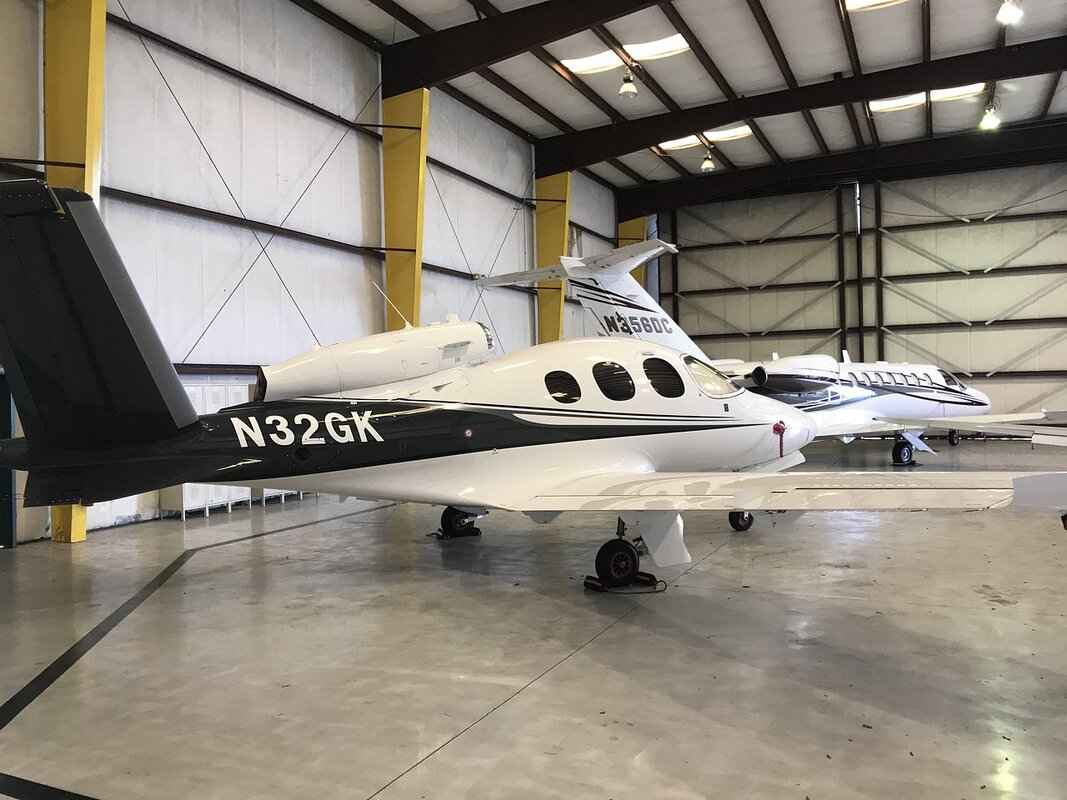
Building Flight Hours and Experience
Accumulating flight hours is not just a requirement; it is a crucial element in the journey of becoming a proficient pilot. As you log flight hours, you are not merely ticking boxes; you are building confidence and experience that will serve you throughout your aviation career. This section will delve into effective strategies for logging hours, maximizing flight opportunities, and understanding the significance of diverse flying experiences.
Why Are Flight Hours Important?
Flight hours serve as a practical measure of a pilot’s experience. Each hour spent in the air contributes to your skill development, allowing you to become more adept at handling various situations. The more you fly, the more familiar you become with the aircraft, weather conditions, and emergency procedures, all of which are vital for safe flying.
Effective Flight Time Logging Techniques
- Use a Logbook: Keeping a detailed logbook is essential. It should include the date, aircraft type, flight duration, and the nature of the flight (solo or dual). This not only helps in tracking your progress but also ensures compliance with FAA regulations.
- Digital Tracking: Consider using digital logbook applications that can simplify the logging process. Many apps allow you to input flight details quickly and even generate reports for your review.
Maximizing Flight Opportunities
To build flight hours effectively, it is important to seek out a variety of flying opportunities. Here are some strategies:
- Cross-Country Flights: Plan cross-country trips to different airports. These flights not only add to your logged hours but also expose you to different airspaces and landing procedures.
- Flight Conditions: Try to fly in various weather conditions. Experience in different scenarios enhances your adaptability and prepares you for real-world flying challenges.
- Join a Flying Club: Becoming a member of a flying club can provide access to aircraft and create opportunities for shared flights with other pilots, further increasing your logged hours.
Learning from Each Flight
Every flight offers a unique learning experience. Whether you are flying solo or with an instructor, take the time to reflect on each flight’s lessons. Consider these approaches:
- Debriefing: After each flight, discuss what went well and what could be improved with your flight instructor. This feedback is invaluable for growth.
- Self-Assessment: Keep a personal journal of your flights to note your feelings and thoughts. This practice can provide insights into your progress and areas needing attention.
Building Confidence Through Experience
As you accumulate flight hours, you will notice a significant boost in your confidence levels. Confidence is particularly important when handling unexpected situations. The more you practice, the more capable you will feel in your abilities as a pilot.
Conclusion
In summary, building flight hours is an essential part of becoming a competent pilot. By employing effective logging techniques, maximizing flight opportunities, and learning from each experience, you can ensure that your journey toward obtaining a Private Pilot License is both fulfilling and successful.
Flight Time Logging Techniques
When it comes to becoming a proficient pilot, one of the most critical aspects is accurately logging flight time. This practice not only helps in tracking your progress but also ensures compliance with regulatory requirements. Below, we explore effective flight time logging techniques that aspiring pilots should adopt.
Keeping precise records of flight hours, including both solo and dual time, is vital for several reasons. First, it is a requirement set forth by the Federal Aviation Administration (FAA). Second, accurate logbooks provide a clear history of your flying experience, which is essential when applying for advanced certifications or jobs in aviation.
Many pilots still prefer the classic method of using paper logbooks. These physical books allow you to jot down flight details such as:
- Date of flight
- Aircraft type
- Flight duration
- Flight conditions
- Instructor signatures (if applicable)
While traditional logbooks can be cumbersome, they offer a tangible record of your flying journey. Make sure to keep your logbook organized and up-to-date to avoid any discrepancies.
In today’s tech-savvy world, many pilots are turning to digital logging solutions. These applications can simplify the logging process through features such as:
- Automatic flight time calculations
- Cloud storage for easy access
- Integration with GPS and flight planning tools
Digital logbooks often come with user-friendly interfaces that allow for quick updates and easy tracking of flight hours. They also help in generating reports required for compliance with FAA regulations.
To ensure that your logging is both accurate and efficient, consider the following best practices:
- Log Immediately: Record your flight hours as soon as you land to avoid forgetting details.
- Be Detailed: Include all relevant information, as this can be crucial for future reference.
- Review Regularly: Periodically check your logbook for accuracy and completeness.
By following these best practices, you can maintain a reliable record of your flying experience, which is essential for any pilot.
Compliance with FAA regulations is non-negotiable for pilots. Your logbook must reflect the necessary flight hours required for various certifications. For instance, to obtain a Private Pilot License (PPL), you must log a minimum of 40 flight hours, including:
- 20 hours of flight training with an instructor
- 10 hours of solo flight time
Understanding these requirements will help you stay on track and ensure that your logged hours meet the necessary standards.
To build your flight hours effectively, seek out diverse flying opportunities. Engage in:
- Cross-country flights
- Night flying
- Flights in varying weather conditions
These experiences not only enrich your logbook but also prepare you for real-world flying challenges. By maximizing your flight opportunities, you can accumulate hours more quickly and gain valuable skills.
In conclusion, mastering flight time logging techniques is an essential part of becoming a successful pilot. Whether you choose traditional logbooks or digital solutions, keeping accurate and detailed records will serve you well throughout your aviation career.
Maximizing Flight Opportunities
For aspiring pilots, gaining experience through various flight opportunities is essential for developing necessary skills and confidence. Engaging in a variety of flying scenarios not only enhances a pilot’s capabilities but also prepares them for the unpredictable nature of real-world aviation.
Cross-Country Flights
Participating in cross-country flights is one of the most significant ways to broaden a pilot’s experience. These flights allow pilots to navigate between different airports, which introduces them to various airspaces and operational procedures. During cross-country flights, pilots learn to:
- Plan flight routes, including fuel stops and alternate airports.
- Understand and comply with different air traffic control regulations.
- Manage navigation using both visual references and instruments.
Such experiences are invaluable as they teach decision-making skills under varying circumstances, which is crucial for any pilot.
Diverse Weather Conditions
Flying in different weather conditions is another vital aspect of pilot training. While it’s important to adhere to safety regulations and avoid flying in hazardous weather, gaining experience in less-than-ideal conditions can significantly enhance a pilot’s skills. Pilots should aim to:
- Practice flying in mild turbulence and learn how to manage the aircraft’s response.
- Understand how to interpret weather reports and forecasts effectively.
- Develop skills in handling low visibility situations.
These experiences can prepare pilots for unexpected weather changes during flights, ensuring they are better equipped to handle a variety of scenarios.
Flight Simulators
Utilizing flight simulators can also be a great way to maximize flying opportunities. Simulators provide a safe environment for pilots to practice emergency procedures, navigation, and flight maneuvers without the risks associated with actual flying. Benefits of using flight simulators include:
- Practicing complex scenarios that may be difficult to replicate in real-life flying.
- Gaining experience with advanced avionics and aircraft systems.
- Improving overall situational awareness and decision-making skills.
Networking with Other Pilots
Building relationships within the aviation community can also open doors to new flying opportunities. Engaging with experienced pilots and joining local flying clubs can provide access to:
- Shared aircraft ownership or rental options.
- Group flying events that offer unique experiences.
- Mentorship opportunities that can accelerate learning.
By actively seeking out diverse flying experiences, aspiring pilots can significantly enhance their skills and prepare themselves for the challenges they will face in their aviation careers. Embracing every opportunity for growth, whether through cross-country flights, exposure to different weather conditions, or networking within the aviation community, will ultimately lead to a more competent and confident pilot.

Maintaining Your Private Pilot License
Maintaining a Private Pilot License (PPL) is essential for ensuring that you remain a competent and safe pilot. Once you have obtained your PPL, it is crucial to understand the ongoing requirements to keep your flying privileges active. This involves a combination of flight currency, regular training, and a commitment to continuous education.
Flight Currency Requirements
To maintain your PPL, you must meet specific flight currency requirements set by the Federal Aviation Administration (FAA). One of the primary stipulations is that you must complete a flight review every two years. This review includes a minimum of one hour of flight training with a certified flight instructor, covering both flight maneuvers and ground instruction. The flight review is designed to ensure that pilots remain proficient and updated on current regulations and best practices.
In addition to the flight review, pilots must also log a minimum of 3 takeoffs and landings within the preceding 90 days to carry passengers. This requirement emphasizes the importance of staying actively engaged in flying, as it helps to reinforce skills and build confidence.
Continuing Education and Training Opportunities
Engaging in ongoing education is another vital aspect of maintaining your PPL. While the flight review ensures basic proficiency, pursuing additional training can significantly enhance your skills and safety as a pilot. For instance, obtaining an instrument rating allows pilots to fly in a wider range of weather conditions, improving overall safety and flexibility.
Participating in advanced flight training, such as aerobatics or complex aircraft operations, can also enrich your flying experience. Many flight schools and aviation organizations offer workshops and seminars that cover various topics, from navigation techniques to emergency procedures. These educational opportunities not only improve your flying skills but also keep you informed about the latest advancements in aviation technology and regulations.
Staying Informed with Regulatory Changes
The aviation industry is constantly evolving, and staying informed about regulatory changes is crucial for maintaining your PPL. Subscribing to aviation newsletters, joining pilot associations, and participating in forums can provide valuable insights into new regulations and best practices. Engaging with the aviation community helps you stay connected and informed, ensuring that you adapt to any changes that may affect your flying privileges.
Networking and Community Involvement
Being part of the aviation community can significantly enhance your flying journey. Joining organizations such as the Aircraft Owners and Pilots Association (AOPA) can provide you with resources, advocacy, and networking opportunities. These organizations often host events, seminars, and workshops that allow you to learn from experienced pilots and industry experts.
Additionally, participating in local aviation events, such as fly-ins and airshows, fosters connections with fellow pilots and aviation enthusiasts. These gatherings can offer insights into the latest trends in aviation and provide opportunities for mentorship and collaboration.
Conclusion
Maintaining your Private Pilot License is an ongoing commitment that requires diligence and dedication. By understanding the flight currency requirements, engaging in continuous education, staying informed about regulatory changes, and actively participating in the aviation community, you can ensure that you remain a proficient and responsible pilot. This commitment not only enhances your flying capabilities but also contributes to the overall safety and integrity of the aviation community.
Flight Review and Currency Requirements
Maintaining a Private Pilot License (PPL) is not just about obtaining the certification; it also involves ongoing responsibilities to ensure safety and proficiency in aviation. One of the key requirements for maintaining a PPL is the **flight review**, which must be completed every two years. This requirement is not merely a bureaucratic formality; it serves several vital purposes that contribute to the safety and effectiveness of pilots.
- Proficiency Check: The flight review is designed to assess a pilot’s flying skills and knowledge. During this review, pilots demonstrate their ability to handle various flight maneuvers and emergency procedures, ensuring that they are still capable of operating an aircraft safely.
- Regulatory Compliance: Aviation regulations are constantly evolving. The flight review provides an opportunity for pilots to stay informed about the latest rules, safety protocols, and best practices in aviation. This knowledge is crucial for both personal safety and the safety of passengers and crew.
- Skill Refreshment: Over time, even experienced pilots may become complacent or forget certain procedures. The flight review serves as a refresher course, helping pilots regain confidence and competence in their flying abilities.
What Does a Flight Review Involve?
A flight review typically consists of two parts: ground instruction and flight instruction.
1. Ground Instruction: - Review of regulations, aircraft systems, and flight planning. - Discussion of recent changes in aviation laws and safety practices.2. Flight Instruction: - Practical demonstration of flight maneuvers. - Assessment of the pilot's ability to handle the aircraft in various scenarios.
Both parts are essential for a comprehensive evaluation of a pilot’s readiness to fly.
Who Can Conduct a Flight Review?
Only a certified flight instructor (CFI) can conduct a flight review. This ensures that the evaluation is carried out by someone knowledgeable about current practices and regulations. Pilots should choose a CFI with whom they feel comfortable, as this can lead to a more productive review experience.
Importance of Ongoing Education
In addition to the flight review, pilots are encouraged to engage in ongoing education. This can include attending seminars, participating in online courses, or pursuing additional ratings, such as instrument ratings or multi-engine ratings. Continuous learning is crucial for enhancing skills and staying updated with the latest advancements in aviation technology and safety.
Conclusion
In summary, the flight review is a critical component of maintaining a Private Pilot License. It ensures that pilots remain proficient, knowledgeable, and compliant with aviation regulations. By prioritizing flight reviews and ongoing education, pilots can enhance their skills and contribute to a safer flying environment for everyone.
Continuing Education and Training
Engaging in continuing education and training is essential for pilots seeking to enhance their skills and maintain safety in the cockpit. As aviation technology and regulations evolve, staying updated through additional training can significantly improve a pilot’s proficiency and confidence. This section discusses the importance of ongoing education, various training opportunities, and how they contribute to a pilot’s overall competency.
Why is Continuing Education Important for Pilots?
The aviation industry is constantly changing, with advancements in technology and updates in regulations. By participating in continuing education, pilots can ensure they are knowledgeable about the latest developments. This commitment to learning not only enhances their skills but also promotes a culture of safety within the aviation community. Pilots who engage in ongoing training demonstrate a proactive approach to their responsibilities, which is vital for ensuring the safety of themselves and their passengers.
Types of Continuing Education Opportunities
- Instrument Ratings: Obtaining an instrument rating allows pilots to fly in a wider range of weather conditions, improving their decision-making skills and overall safety.
- Advanced Maneuvers Training: This training focuses on complex flight maneuvers, enhancing a pilot’s ability to handle challenging situations.
- Safety Courses: Participating in safety seminars and workshops can provide valuable insights into risk management and emergency procedures.
- Online Courses: Many organizations offer online training programs covering various topics, from aviation regulations to advanced flight techniques.
Benefits of Continuous Learning
Continuous learning is a hallmark of a responsible and competent pilot. It fosters a mindset of adaptability and preparedness, enabling pilots to handle unexpected situations with confidence. Furthermore, engaging in additional training can lead to new opportunities within the aviation industry. Pilots who invest in their education often find themselves better positioned for career advancement, whether that means moving into more complex flying roles or taking on leadership positions within their organizations.
Community Involvement and Networking
Participating in continuing education also opens doors to networking opportunities. Engaging with fellow pilots and instructors allows for the exchange of knowledge and experiences, which can be invaluable for personal growth. Joining aviation organizations or attending industry conferences can further enhance this network, providing access to resources and support.
Conclusion
In summary, ongoing education and training are vital for pilots aiming to maintain their skills and ensure safety in the cockpit. By embracing a culture of continuous learning, pilots not only enhance their abilities but also contribute to the overall safety of the aviation community. Whether through formal training programs, safety courses, or community involvement, the benefits of continued education are clear, making it an essential aspect of a successful aviation career.
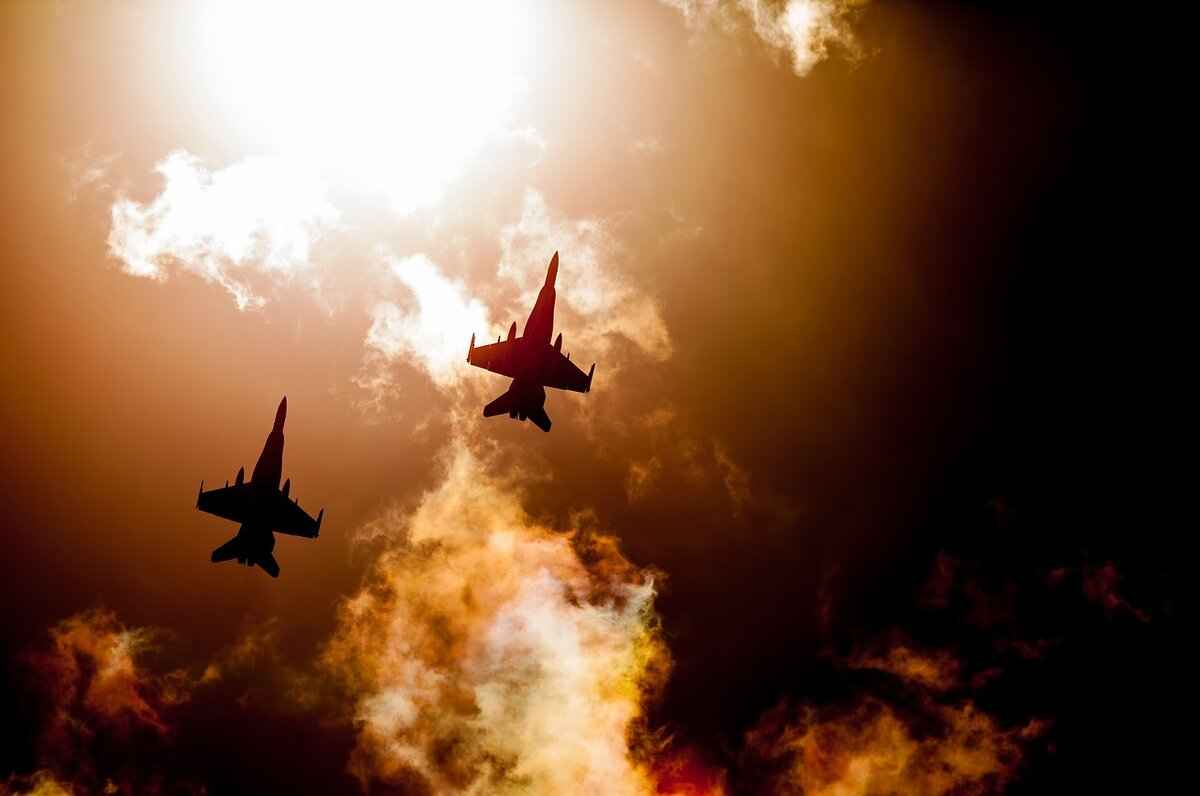
Networking and Community Involvement
Engaging with the aviation community is not just beneficial; it is essential for aspiring pilots and seasoned aviators alike. The aviation world can be complex and challenging, but by building connections, pilots can access a wealth of support, resources, and opportunities for growth. This article will delve into the various ways pilots can enhance their flying experience through networking and community involvement.
Networking in aviation serves as a foundation for personal and professional growth. By connecting with other pilots, aviation enthusiasts, and industry professionals, individuals can:
- Share Knowledge: Gain insights from experienced pilots about best practices, safety tips, and flight techniques.
- Access Resources: Find mentors who can guide them through training, certification, and career advancement.
- Discover Opportunities: Learn about job openings, internships, and scholarships within the aviation sector.
One of the most effective ways to engage with the aviation community is by joining organizations like the Aircraft Owners and Pilots Association (AOPA) or the Experimental Aircraft Association (EAA). Membership in these organizations offers numerous benefits, including:
- Advocacy: These organizations advocate for pilots’ rights and interests at local and national levels.
- Training Resources: Access to training materials, seminars, and workshops that enhance flying skills and knowledge.
- Networking Events: Opportunities to meet fellow aviation enthusiasts and professionals at various events.
Attending local events such as fly-ins, airshows, and aviation seminars can significantly enrich a pilot’s experience. These gatherings not only provide a platform for social interaction but also offer:
- Hands-On Experience: Opportunities to participate in workshops and demonstrations that enhance practical skills.
- Community Building: A chance to meet local pilots, share experiences, and build lasting friendships.
- Industry Insights: Access to talks and presentations from industry leaders that keep pilots informed about the latest trends and technologies.
In today’s digital age, social media platforms and online forums have become invaluable tools for networking. Websites like Pilot Forums and Facebook groups dedicated to aviation allow pilots to:
- Engage in Discussions: Participate in conversations about flying experiences, challenges, and solutions.
- Seek Advice: Ask questions and receive feedback from a diverse group of pilots and aviation experts.
- Share Resources: Exchange information about training materials, flight schools, and aviation-related events.
Another critical aspect of networking involves developing relationships with flight instructors. These professionals can provide valuable insights into the aviation industry and offer guidance on career paths. By establishing rapport with instructors, pilots can:
- Receive Personalized Feedback: Benefit from tailored advice on improving flying skills.
- Access Career Guidance: Gain insights into potential career opportunities and necessary certifications.
- Enhance Training Experience: Develop a more enriching and supportive learning environment.
In summary, engaging with the aviation community is crucial for pilots seeking to enhance their flying experience. By building a robust network of fellow aviators and participating in various activities, pilots can access a wealth of resources, knowledge, and opportunities that will support their journey in aviation. Whether through joining organizations, attending events, or utilizing online platforms, the benefits of networking are profound and far-reaching.
Joining Aviation Organizations
is a crucial step for both aspiring and current pilots. Organizations such as the Aircraft Owners and Pilots Association (AOPA) provide a wealth of resources, advocacy, and networking opportunities that can significantly enhance a pilot’s career and flying experience. This article delves into the benefits of joining such organizations and how they can serve as a valuable asset in the aviation community.
One of the primary advantages of becoming a member of aviation organizations is the access to a plethora of resources. These organizations offer:
- Educational materials: Members can access a variety of publications, webinars, and online courses that cover essential topics such as regulations, safety protocols, and advancements in aviation technology.
- Flight planning tools: Many organizations provide flight planning resources, including weather updates, navigation aids, and airspace information, which are critical for safe and efficient flying.
- Insurance advice: Members can receive guidance on selecting appropriate insurance coverage for their aircraft and flying activities, ensuring they are adequately protected.
Aviation organizations like AOPA play a vital role in advocating for pilots’ rights at local, state, and national levels. They engage in:
- Legislative advocacy: These organizations work tirelessly to influence legislation that affects general aviation, ensuring that the interests of pilots are represented.
- Regulatory guidance: They provide insights and updates on FAA regulations, helping pilots stay informed about compliance requirements and changes in aviation law.
- Safety initiatives: By promoting safety programs and campaigns, these organizations contribute to reducing accidents and enhancing overall aviation safety.
Joining an aviation organization opens the door to a vast network of fellow aviators. This network can lead to:
- Mentorship opportunities: Connecting with experienced pilots can provide invaluable insights and guidance, especially for those new to flying.
- Social events: Many organizations host events such as fly-ins, seminars, and conferences where members can meet, share experiences, and build friendships.
- Job opportunities: Networking within these organizations can lead to potential job openings or collaborations in the aviation field, enhancing career prospects.
Many aviation organizations organize local events that foster community engagement among pilots. Participation in these events can:
- Enhance flying skills: Workshops and training sessions provide opportunities to learn new techniques and improve flying proficiency.
- Build camaraderie: Engaging with fellow pilots fosters a sense of community and belonging, which is essential for personal growth and support.
- Promote aviation awareness: Events such as airshows and educational outreach programs help promote the aviation industry and inspire the next generation of pilots.
Joining aviation organizations like AOPA is a strategic move for both aspiring and current pilots. The resources, advocacy, and networking opportunities available through these organizations can significantly enhance a pilot’s knowledge, skills, and career trajectory. By actively participating in these communities, pilots not only improve their flying experience but also contribute to the broader aviation community.
Participating in Local Events
Attending local aviation events such as fly-ins, airshows, and seminars is an invaluable part of a pilot’s journey. These gatherings not only serve as a platform for showcasing aircraft and aviation technology but also foster a sense of community and connection among aviation enthusiasts.
- Networking Opportunities: One of the primary benefits of attending these events is the opportunity to meet fellow pilots, instructors, and aviation professionals. Building relationships within the aviation community can lead to mentorship, partnerships, and even job opportunities.
- Knowledge Sharing: Local events often feature seminars and workshops led by experienced pilots and industry experts. These sessions can provide insights into various aspects of flying, from advanced techniques to regulatory updates, enhancing overall aviation knowledge.
- Hands-On Experience: Many fly-ins and airshows offer attendees the chance to experience aircraft up close. This can include tours, demonstrations, and even flight experiences, allowing pilots to broaden their understanding of different aircraft types and technologies.
- Community Engagement: Participating in local events fosters camaraderie among pilots. Sharing experiences, challenges, and successes helps build a supportive network that can be beneficial throughout a pilot’s career.
Enhancing Skills and Safety
Engaging in local aviation events is not just about networking; it also serves as an excellent opportunity to enhance flying skills and safety awareness. Many events include safety briefings and discussions on best practices, which are crucial for maintaining a high standard of safety in aviation.
For instance, pilots can learn about:1. Latest safety protocols2. Emergency procedures3. Weather assessment techniques4. Aircraft maintenance tips
These topics are essential for both novice and seasoned pilots, as they contribute to a culture of safety and responsibility within the aviation community.
Exploring New Aviation Technologies
Local airshows often feature the latest advancements in aviation technology. Attendees can witness demonstrations of new aircraft, avionics, and safety systems. This exposure is invaluable for pilots looking to stay updated on industry trends and innovations.
| Technology | Description |
|---|---|
| Advanced Avionics | Modern cockpit systems that enhance navigation and safety. |
| Electric Aircraft | Innovative designs focusing on sustainability and reduced operating costs. |
| Drone Technology | Applications in various sectors, including agriculture and surveillance. |
Understanding these technologies can help pilots make informed decisions about their training and flying practices.
Conclusion
Participating in local aviation events is a pivotal aspect of a pilot’s development. By engaging with the community, enhancing skills, and staying informed about new technologies, pilots can significantly enrich their flying experience. These events not only provide essential networking opportunities but also contribute to a safer and more knowledgeable aviation community.

Conclusion
Pursuing a Private Pilot License (PPL) is not just about flying; it is a transformative experience that opens doors to new adventures and opportunities. This journey is filled with challenges and rewards that contribute to both personal and professional growth. Understanding the intricacies of obtaining a PPL can significantly enhance your flying experience and career prospects.
A Private Pilot License is essential for anyone looking to fly for leisure or as a stepping stone to a career in aviation. It represents a commitment to safety, knowledge, and skill development. By obtaining a PPL, pilots gain freedom to explore the skies, making it a valuable asset for both personal enjoyment and future career advancements.
- Travel Flexibility: With a PPL, pilots can fly on their own schedule, avoiding the constraints of commercial airlines.
- Personal Enjoyment: Flying can be a thrilling hobby, allowing individuals to experience the world from a unique perspective.
- Career Advancement: A PPL can serve as a foundation for further training and certifications, paving the way for a professional aviation career.
To earn a PPL, candidates must meet several requirements, including:
- Age: Applicants must be at least 17 years old.
- Medical Certification: A valid medical certificate is required to ensure the candidate is fit for flying.
- Flight Training: A minimum of 40 flight hours, including dual instruction and solo flying, is necessary.
Selecting a reputable flight school is crucial for effective training. Consider factors such as:
- Location: Proximity to the school can affect your training schedule.
- Instructor Experience: Experienced instructors can provide valuable insights and guidance.
- Training Resources: A school with comprehensive resources can enhance learning.
Passing the FAA written exam is a critical step in obtaining a PPL. Effective preparation strategies include:
- Study Resources: Utilize books, online courses, and study guides to grasp aviation concepts.
- Practice Exams: Taking mock tests helps familiarize candidates with the exam format and identify areas for improvement.
Flight training is a pivotal part of obtaining a PPL. Expect to engage in:
- Dual Instruction: Initial training involves working closely with a certified flight instructor.
- Solo Flights: After gaining proficiency, students will undertake solo flights to build confidence.
Accumulating flight hours is essential for gaining experience as a pilot. Effective logging techniques include:
- Accurate Record-Keeping: Use logbooks and digital tracking to maintain compliance with FAA regulations.
- Diverse Experiences: Seek various flying opportunities to enhance skills and prepare for real-world challenges.
Once obtained, maintaining your PPL involves:
- Flight Reviews: Completing a flight review every two years to remain proficient.
- Continuing Education: Engaging in additional training to enhance skills and safety.
Engaging with the aviation community provides valuable resources and support. Consider:
- Joining Aviation Organizations: Membership in organizations like AOPA offers advocacy and networking opportunities.
- Participating in Local Events: Attend fly-ins and airshows to connect with fellow aviation enthusiasts.
Frequently Asked Questions
- What is a Private Pilot License (PPL)?
A Private Pilot License (PPL) is a certification that allows individuals to fly aircraft for personal and recreational purposes. It provides the freedom to travel on your own schedule and explore new destinations.
- What are the requirements to obtain a PPL?
To obtain a PPL, you must be at least 17 years old, hold a valid medical certificate, and complete a minimum of 40 flight hours, which includes both dual instruction and solo flying time.
- How can I choose the right flight school?
When selecting a flight school, consider factors such as location, instructor experience, and the curriculum offered. Reading reviews and testimonials from former students can also provide valuable insights.
- What should I expect during flight training?
Flight training typically starts with dual instruction alongside a certified flight instructor. As you progress, you’ll gain the opportunity to undertake solo flights, which are crucial for building confidence and skill.
- How do I maintain my PPL once I have it?
To maintain your PPL, you must complete a flight review every two years and stay current with your flying skills. Engaging in continued education and training can also enhance your proficiency and safety as a pilot.

